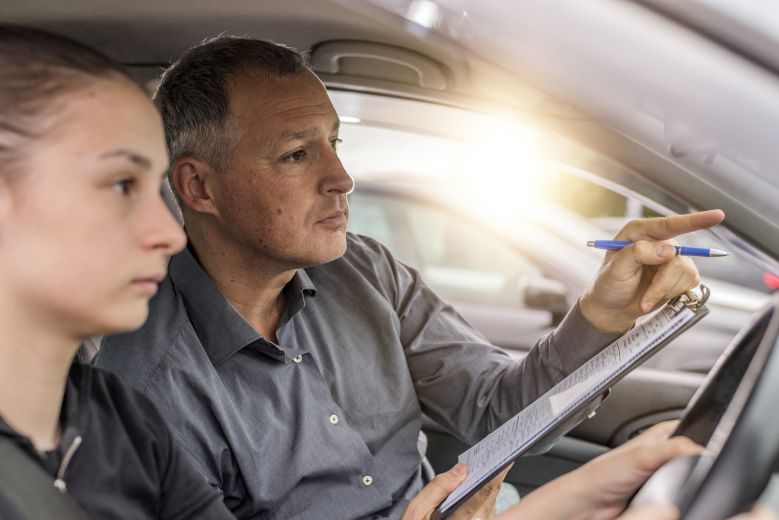These questions will be an integral to you passing or failing the test – so knowing what to expect will give you the edge.
In total, there are 7 ‘show me’ questions, and 14 ‘tell me’ ones. This guide looks into what they are – and what you need to do.
Why are they in your driving test?
Safety is at the cornerstone of every driving test, as allowing someone who is unfit to be out on the road will be dangerous to everyone.
When taking your test, you’ll be asked two questions. During the test, the examiner will ask you one of each.
For the ‘tell me’ question you’ll need to explain how you’d carry out a safety task. This will take place at the start of your test, before you start driving.
After this, during the driving portion of the test, you’ll need to answer the ‘show me’ question. This is where you’ll have to show how you would carry out a safety task while you’re behind the wheel.
If you fail one or both, you’ll get one driving fault – also known as a ‘minor’. Should you carry out a dangerous move during the ‘show me’ part of the test – you will get a 'major' driving fault and automatically fail your driving test.
The information for this guide is from the Driver & Vehicle Standards Agency (DVSA).
2024 Driving Theory Test app
Want to pass your theory test first time? Download the 2024 Driving Theory Test app featuring fully licensed DVSA theory test questions and hazard perception clips.


‘Show me’ questions
All of these should only be done when it is safe to do so – and your instructor/examiner will let you know when this happens.
If you're parked up, make sure the handbrake is on and that the key is turned enough for you to be able to operate electrical components. This is sometimes called the 'accessory mode' or simply 'on'.
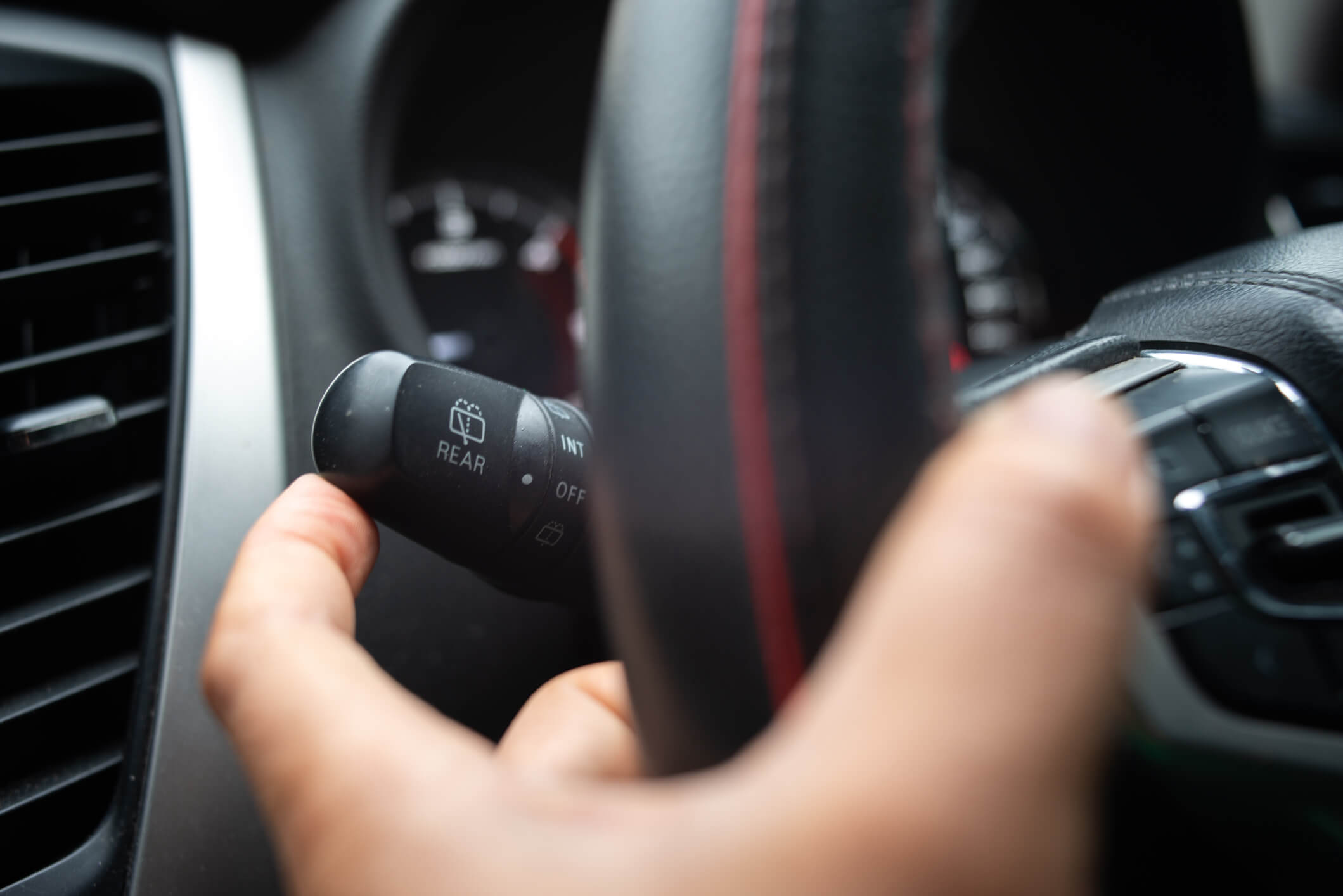
Can you show me how you wash and clean the rear windscreen?
Although this can vary slightly depending on the make and model of the vehicle, you will normally be able to do this by pushing or pulling the indicator stalk on the right hand side. In other cars, you will need to toggle a part of the indicator stalk to start the fluids and rear wipers.
Keep your hands on the wheel at all times and use your fingers to engage the controls.
Although it is not a part of this element of the test, knowing how to check your windscreen wash is important for all drivers, as the Highway Code clearly states the windscreens and windows must be kept clean and free from obstructions.
Can you show me how you wash and clean the front windscreen?
Similar to the above, however, you will likely only need to pull the indicator stalk on the right hand side towards you with an outstretched finger. Keep your eyes on the road and your hands on the wheel.
Can you show me how you would switch on your dipped headlights?
You may need to demonstrate that you can operate the car's headlights. Depending on the make and model of vehicle, the dipped headlights will be switched on with a switch or a knob - check the owner's handbook of the vehicle if you are unsure.
Can you show me how you would set the rear demister?
To do this, you will need to turn on the fan, set the dial to blow air at the rear windscreen, and turn the heat up.
Some vehicles (including most modern ones) have a separate button that targets the rear windscreen that can help demist quicker. It's often got an icon in the shape of a square with wavy lines flowing into it from below to represent the warm air being blown at the window.
Can you show me how you would demist the front windscreen?
Similar to the above example – turn on the fan, set the dial to blow air at the front windscreen, and turn the heat up.
There will also be a separate button to press which can accelerate the process. The icon is usually in the shape of a windscreen with wavy lines flowing into it from below.
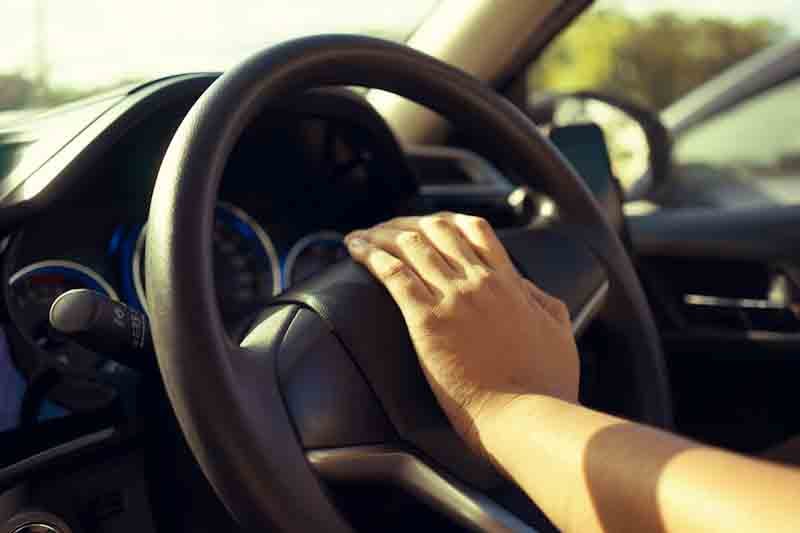
Can you show me how you would operate the horn?
Your instructor may expect you to test the horn.
To activate the horn, push the centre of the steering wheel or press a button on one of the stalks behind the steering wheel to show it is working. This doesn’t need to be for long, just to show that you can operate it, and all road users can hear you.
Some cars have specific panels which can be depressed in order to honk the horn (which have the icon of a little horn on them), but most will still function if you just press firmly on the centre of the wheel.
Can you show me how you would open and close the side window?
When it is safe to do so, use your right hand to push the side window buttons on the driver’s side door.
They are simple to operate, and you will need to open and then close the window.
The Government released the below video to show what learner drivers can expect for all the ‘show me’ parts of their test.
‘Tell me’ questions
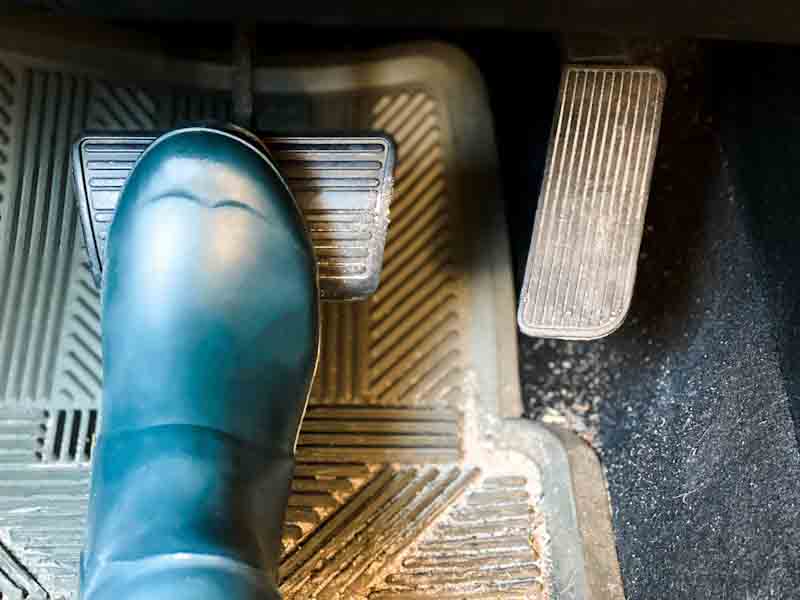
1. How would you check that the brakes are working before starting a journey?
According to the Government website, which instructs the examiners on what to look out for, ‘brakes should not feel spongy or slack’. This means that you will need to tell the examiner how you would test the brakes.
This would be done by gently pressing your foot down on the brake pedal - the vehicle should not pull to one side when you do this.
2. Where would you find the information for the recommended tyre pressures for this car and how tyre pressures should be checked?
There are several ways you can find this information. It is in the vehicle’s manufacturer’s guide, or on the sidewall of the tyre.
To check the pressure, you will need to use a reliable pressure gauge, check by removing the valve cap, attaching the tool to the valve, make a reading, then adjusting accordingly.
A driver should check the pressures when tyres are cold, and remember to refit valve caps.
Don’t forget to check your spare tyre, if your vehicle has one.
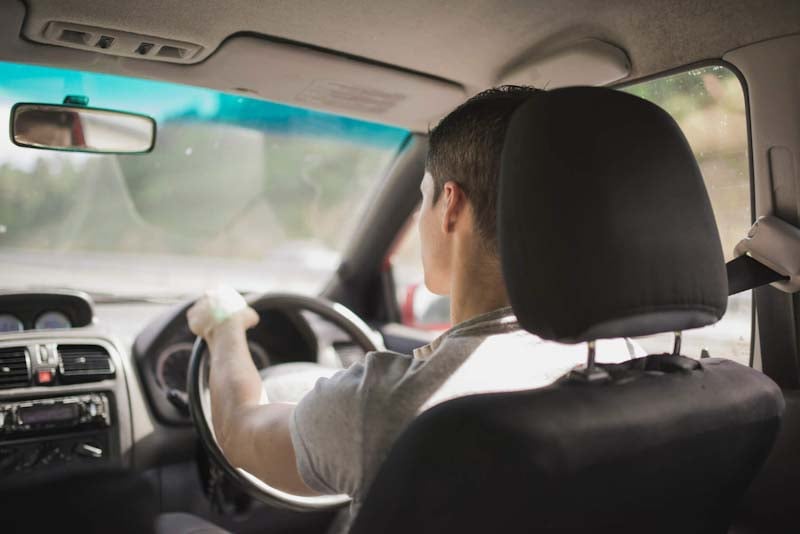
3. How would you make sure your head restraint is correctly adjusted so it provides the best protection in the event of a crash?
Before you set off on your driving test, you may be asked to explain how you'd adjust the head restraint. Make sure that the rigid part of the head restraint is at least as high as the eye or top of the ears, and as close to the back of the head as is comfortable.
However, in some vehicles, the restraints might not be adjustable. Your instructor will tell you if this is the case.
4. How would you check the tyres to ensure that they have sufficient tread depth and that their general condition is safe to use on the road?
Tyre safety is an integral part of owning a vehicle. And you may need to explain how you would check the tread depth and condition before a journey.
You need to make sure there are no cuts, cracks, or bulges in the tyre. An essential part of this is to check that your tyres have 1.6mm of tread depth across the central three-quarters of the breadth of the tyre, and around the entire outer circumference of the tyre.
5. How would you check that the headlights and taillights are working?
In this part of the test, you will need to explain how you would operate the switch, and then walk around vehicle to check the lights are working. As this is part of the a ‘tell me’ questions, you don’t need to physically check the lights – just explain what you would do. You may need to turn on the ignition to demonstrate this part of the test.
6. How would you know if there was a problem with your anti-lock braking system?
Dashboard warning lights indicate many things that are happening with your vehicle – knowing what each of them means is vital for all drivers.
However, for this example, the ABS warning light should illuminate if there is a fault with the anti-lock braking system.
Point this out on the dashboard. Even though it shouldn't be illuminated, you should be able to see it. It will be the letters 'ABS' usually inside a circle:
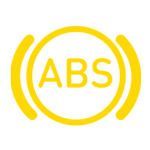
7. How would you check the direction indicators are working?
You will need to explain to the examiner how you would operate the indicators for an upcoming turn in the road. Push the indicator stalk up and down to demonstrate.
Again, for this one you don’t need to exit the vehicle – just explain that you would need to safely exit the vehicle and check.
_edited.jpg)
8. How would you check the brake lights are working on this car?
For this part of the test, you will need to explain to the examiner how you would operate the brake pedal, and then make use of reflections in windows or doors in the surrounding area to see if they are working.
Alternatively, you would suggest that you ask someone else to help and see if they turn on when the brake is applied.
Checking lights and bulbs is an essential part of car maintenance.
9. How would you check the power-assisted steering is working before starting a journey?
Your examiner will be looking for you to explain two important checks you would make before starting your journey.
For the first one, gently turn the steering wheel while the engine is started – and this should result in a slight, but noticeable movement.
The second way of testing is by turning the steering wheel just after moving off. It will give an immediate indication that the power assistance is functioning.
10. How would you switch on the rear fog lights and explain when you would use them?
Your examiner may expect you to be able to explain how you would turn on your fog lights for the rear of your vehicle. In most vehicles, this will be a separate button to the right of the steering wheel. Fog lights icons have a semicircle alongside a vertical wiggly line with 3 horizontal lines through it for rear lights, and 3 diagonal lines through it for headlights. Here's an example, front lights are above, rear lights are below:
![]()
A warning light will appear to show it is working. You would use this in difficult driving conditions, such as fog and heavy snow.
Again, you don’t need to exit the vehicle – just explain how and when to use it.
11. How would you switch your headlight from dipped to main beam and how would you know the main beam is on?
Turn on the engine and pull/push the full beam indicator (usually a stalk on your steering column). A blue light in the shape of a beaming light will appear on the dashboard if it is on.
This would be used in foggy and heavy snow conditions.
12. Open the bonnet and tell me how you would check that the engine has sufficient oil
You will need to explain how you'd identify the dipstick/oil level indicator, and check the oil level against the minimum and maximum markers.
This would be done by locating the indicator, usually a yellow ring-shaped handle, and pulling it out when parked on a level surface. You would then wipe the oil stick indicator, replace it, then pull it out again to check the oil level.
This video show how to check your car’s engine oil.
13. Open the bonnet and tell me how you would check that the engine has sufficient engine coolant
You may be asked how you would open the bonnet and check the engine coolant.
To do this, you'd check the level marker on the side of the coolant tank - usually a raised line with an arrow pointing to it, or something written like the word 'level' or 'max'. If the water level is within the acceptable range, then coolant is sufficient, otherwise tell the examiner how you'd open the cap and fill to the appropriate level with engine coolant.
14. Open the bonnet and tell me how you would check that you have a safe level of hydraulic brake fluid
Finally, you could be asked to explain how you'd identify the hydraulic brake fluid reservoir, and then check the level against high and low markings.
Simply open the bonnet, locate the reservoir (located on the right hand/driver’s side of the engine), open the cap, and see if the fluid is in-between the two marked levels.
The Government released the below video to show what learner drivers can expect for the ‘tell me’ part of their test.
The RAC has a range of helpful guides for learner drivers that will help you pass your practical driving test.
As for the theory test, an app like Driving Theory Test UK is a great place to start, with all necessary learning materials, hazard perception clips and Highway Code info included. You can download it here:

Cheaper than AA or we’ll beat by 20%^
• Roadside cover from £5.49 a month*
• We get to most breakdowns in 60 mins or less
• Our patrols fix 4/5 breakdowns on the spot
*At least 10% of new customers pay this for single-vehicle Roadside (Basic). ^Find the same cover cheaper on theaa.com within 7 days & we'll beat it by 20%. T&Cs here.


